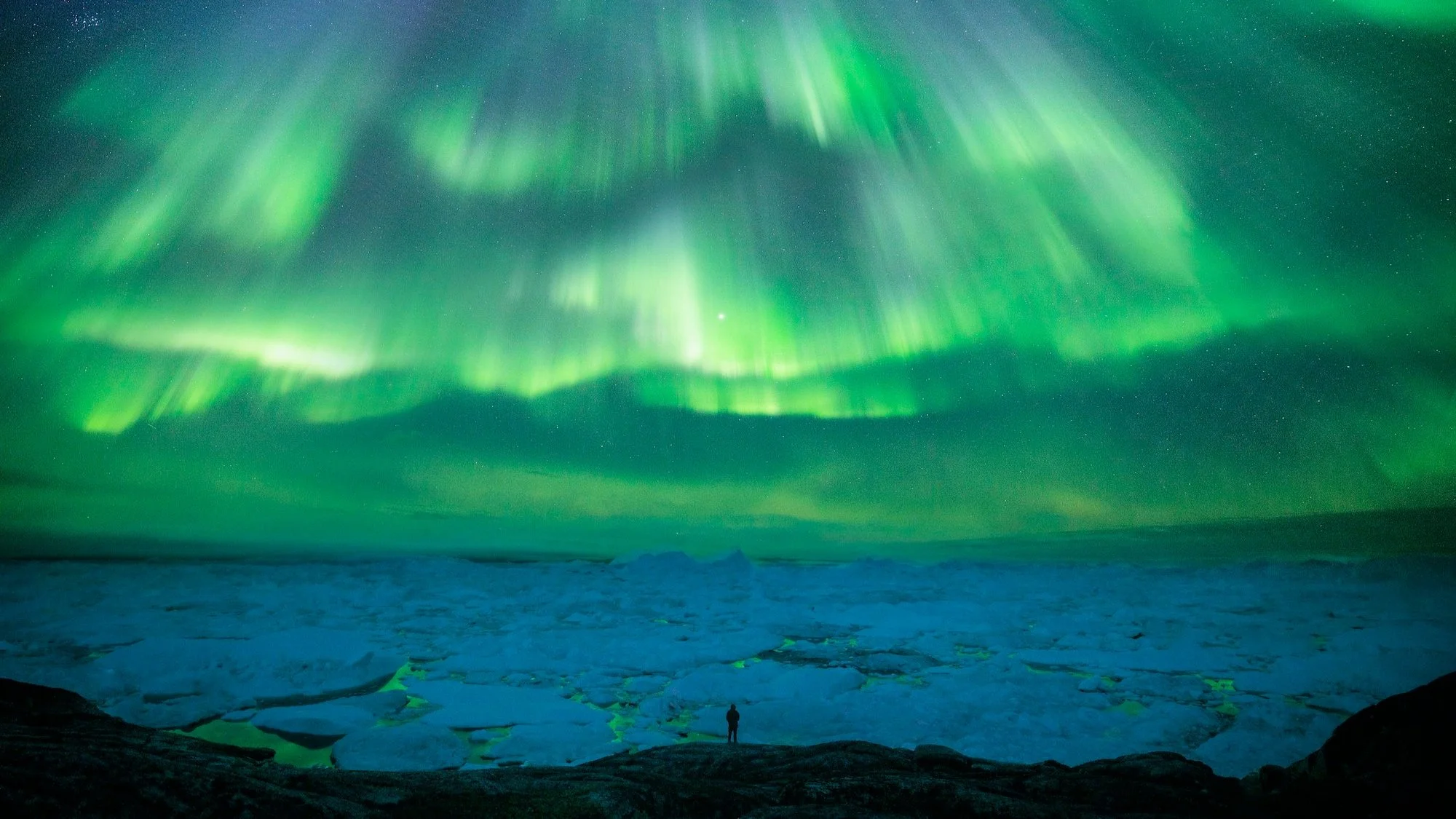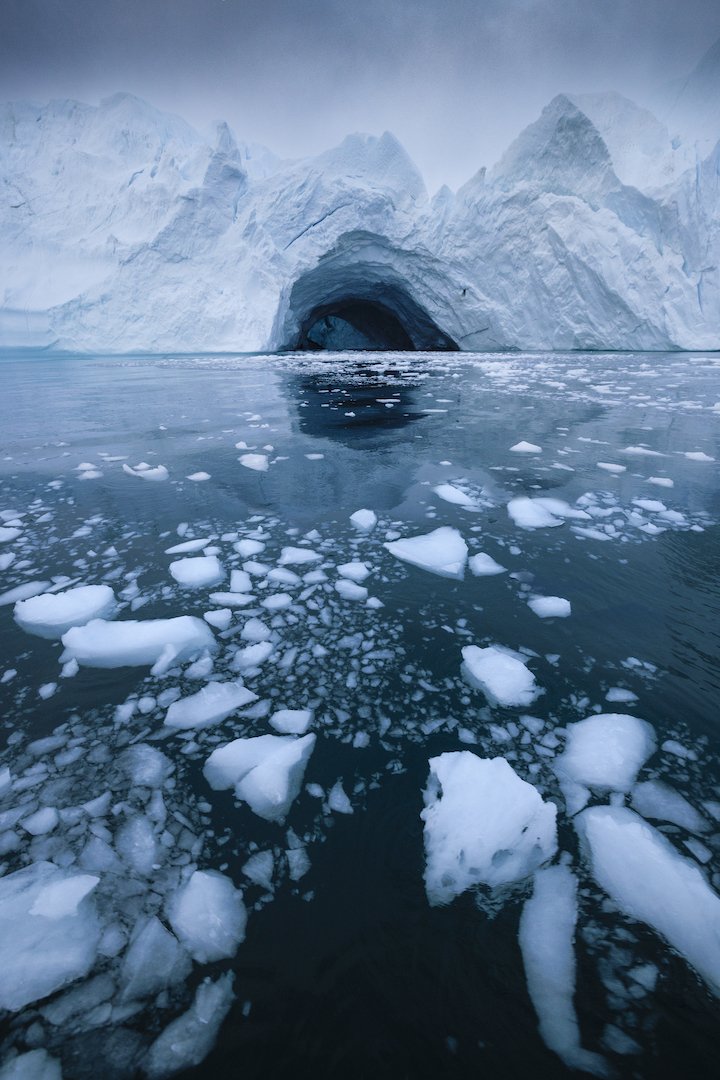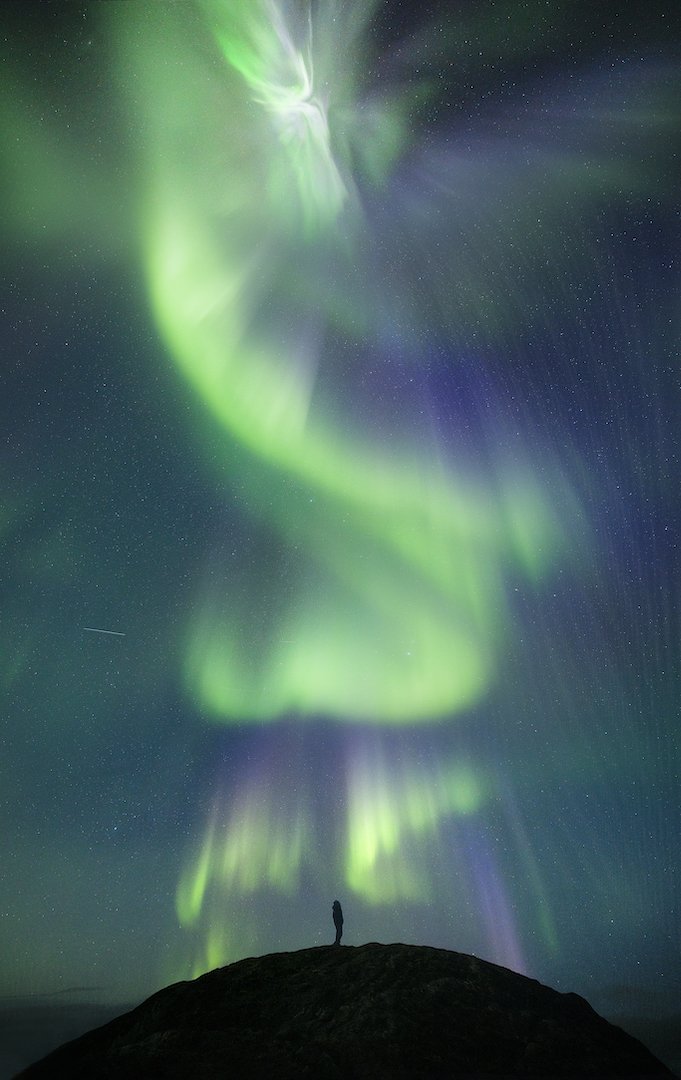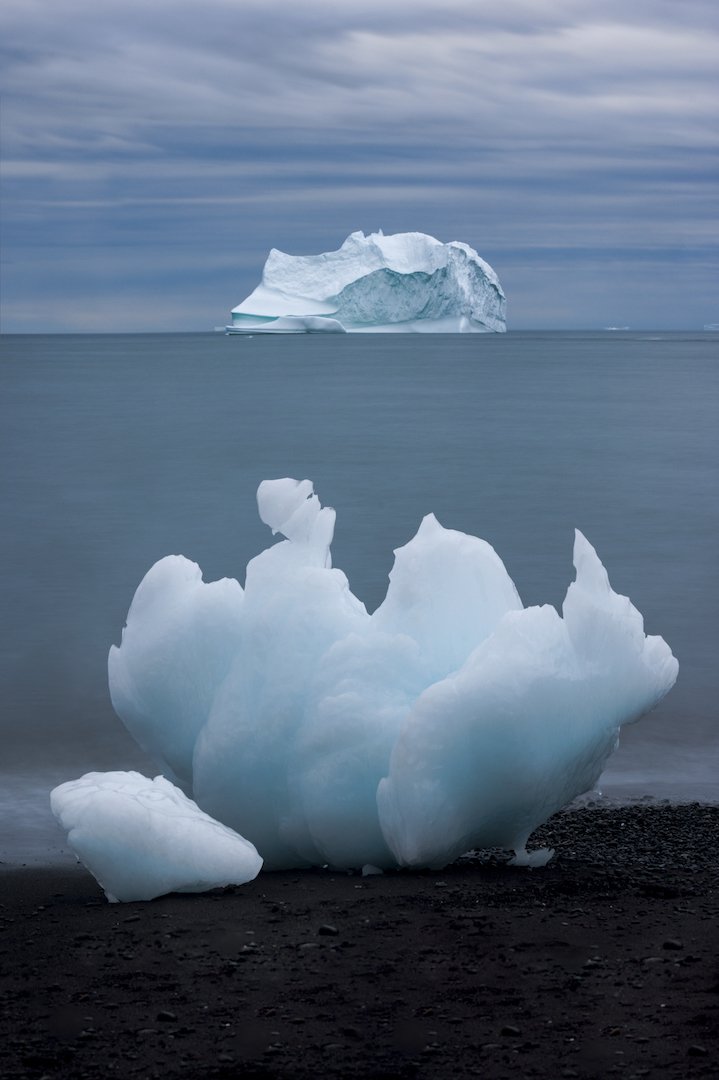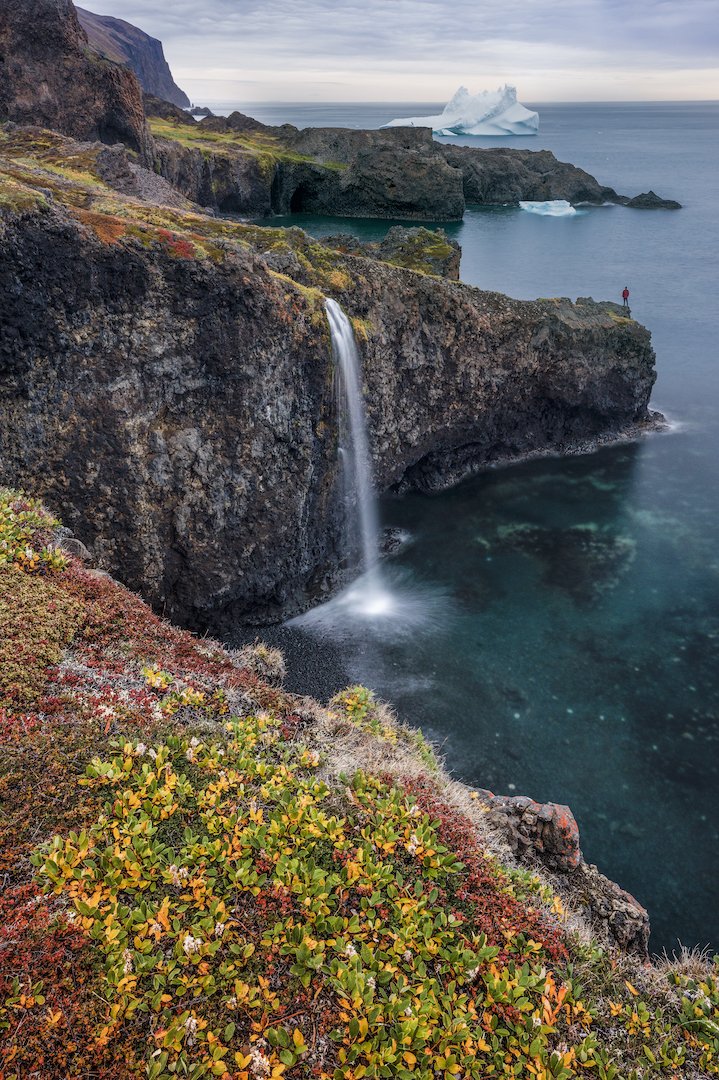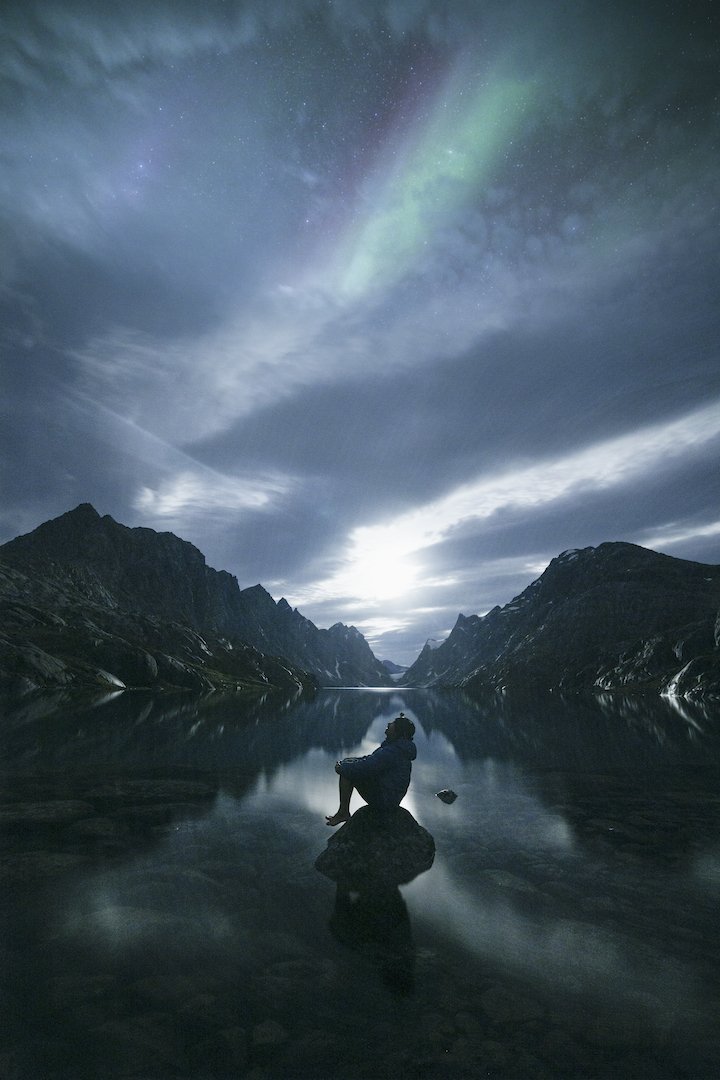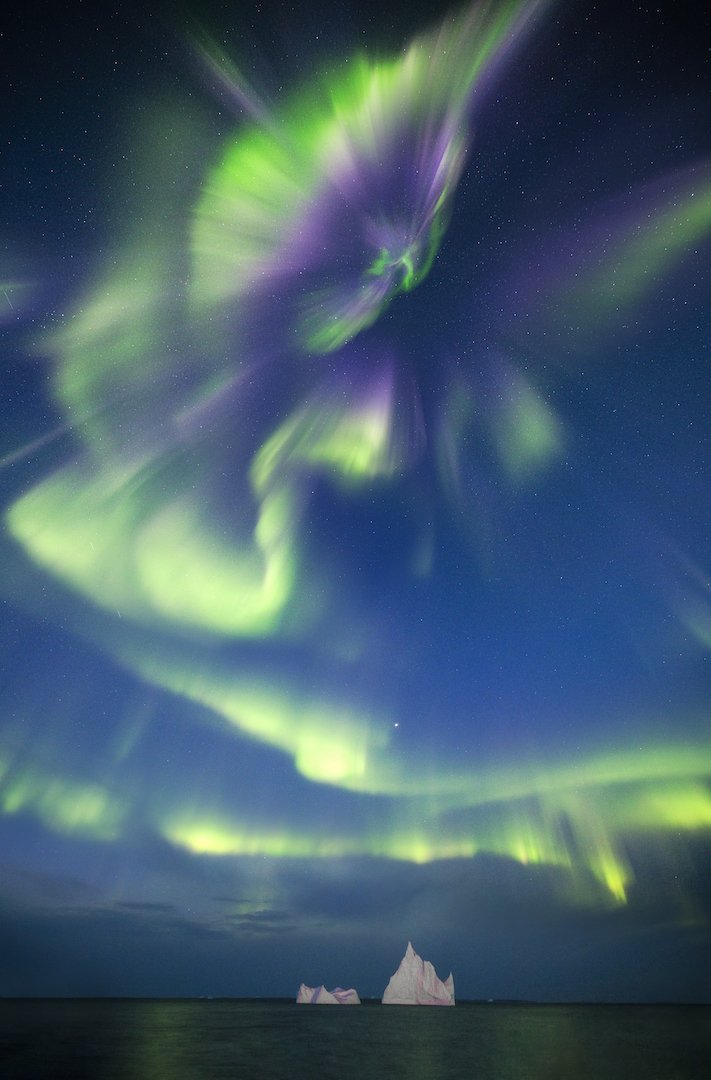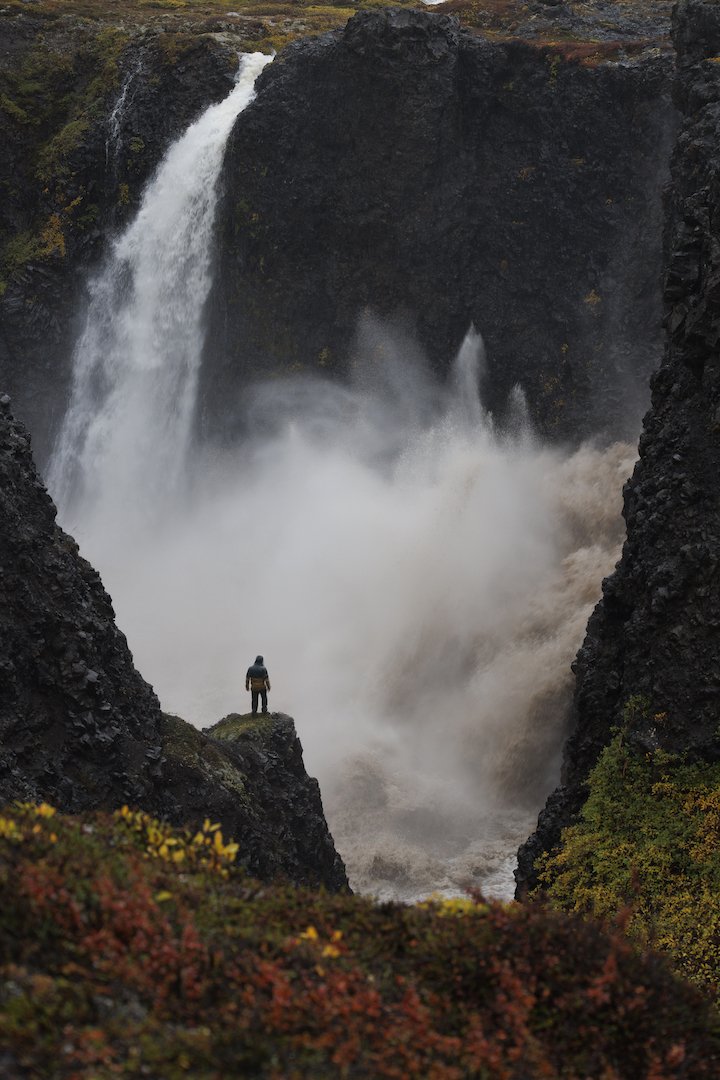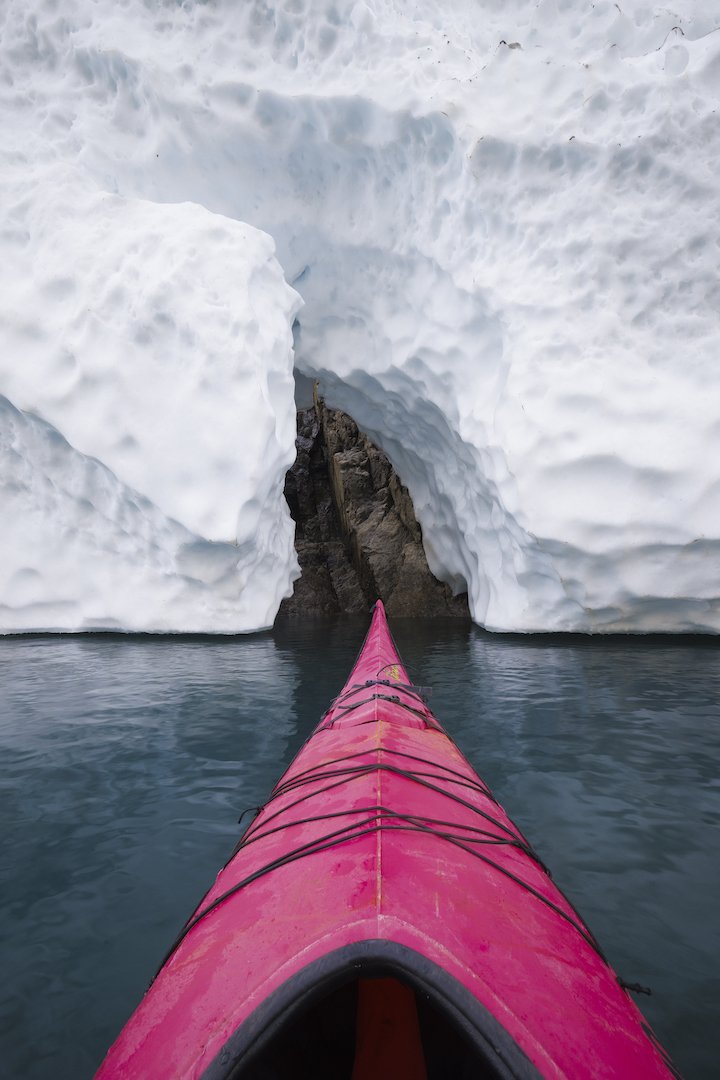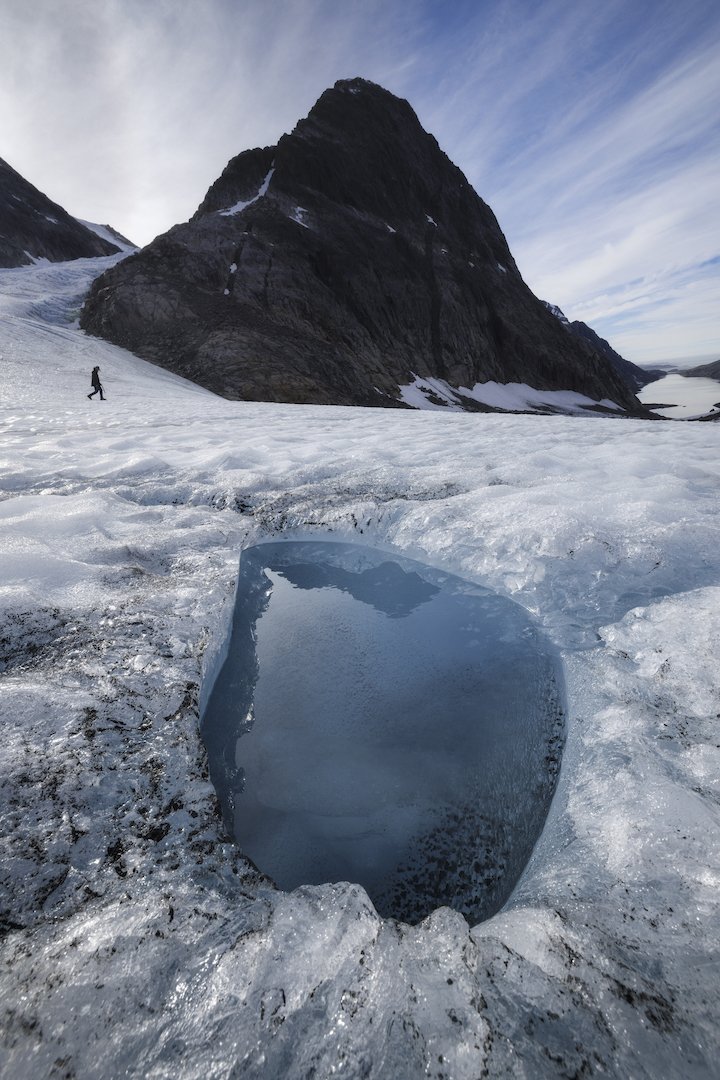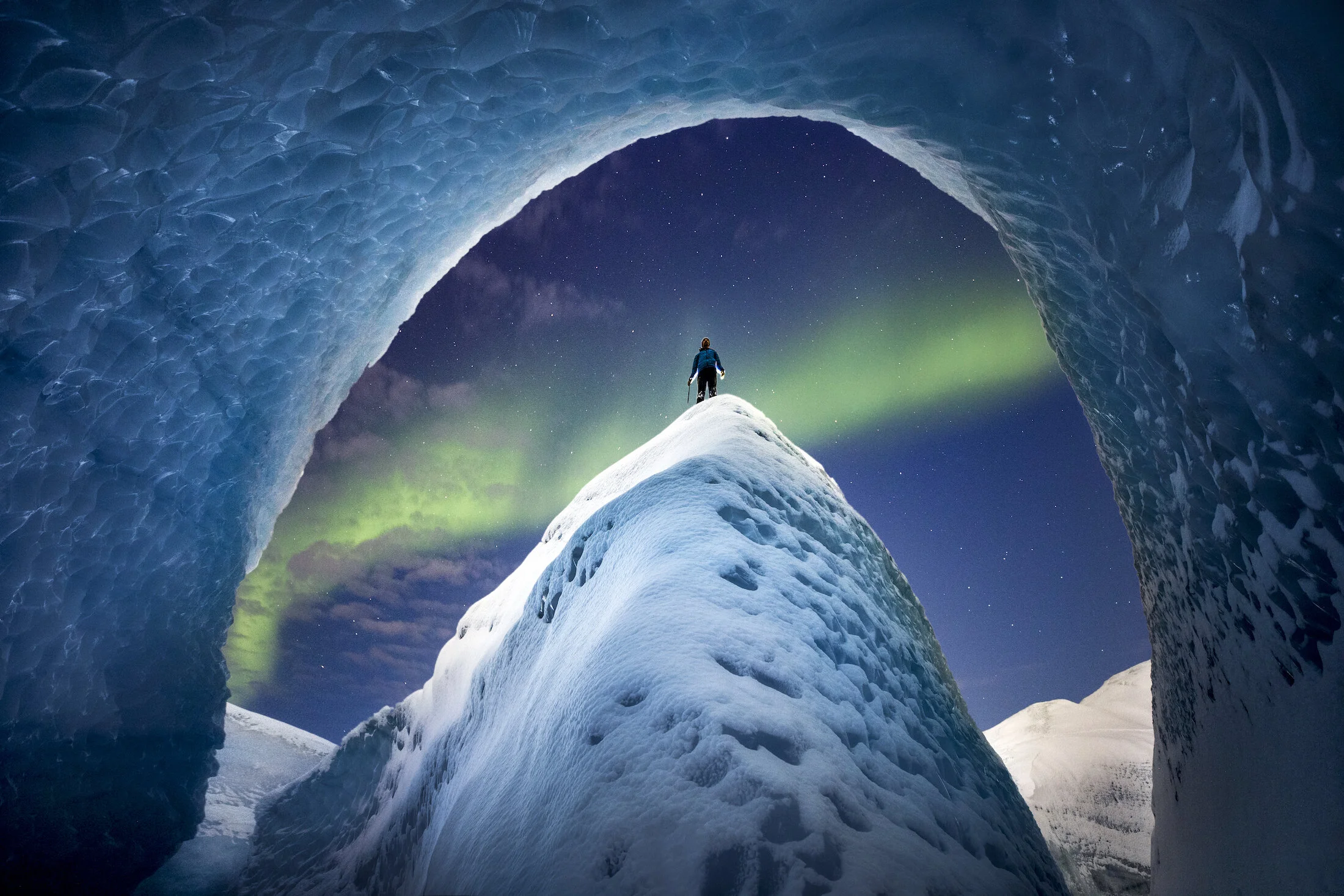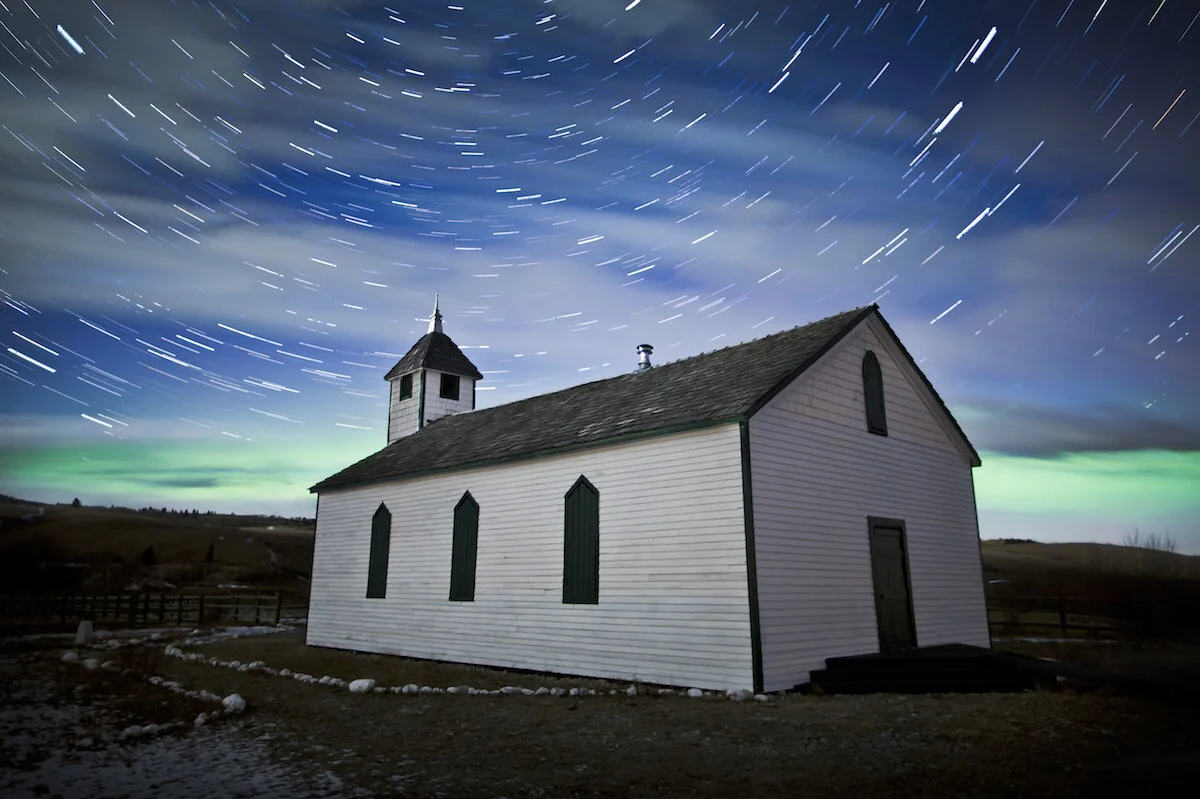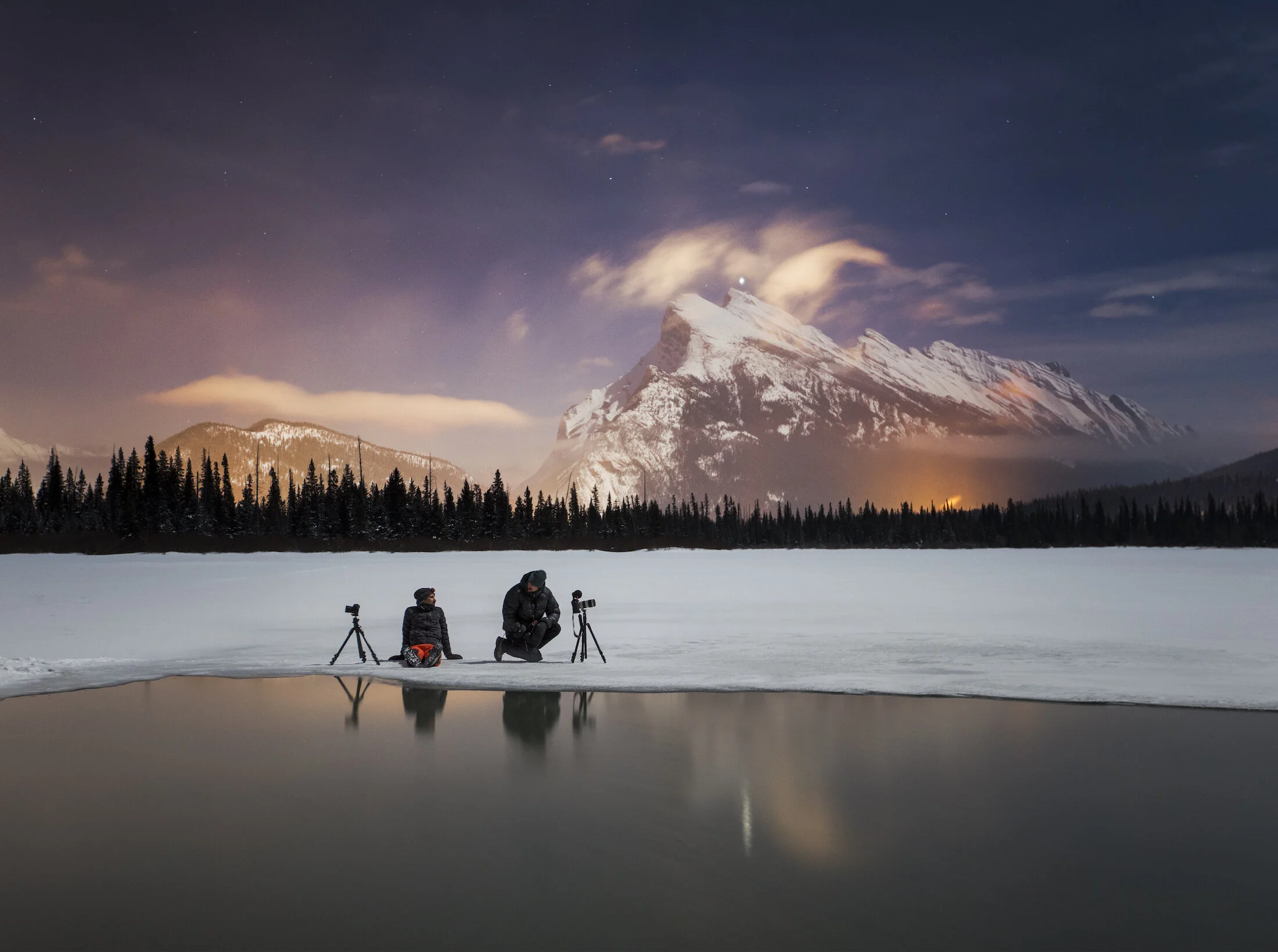
Greenland Grandeur: Ice, Water and Northern Lights
Earlier this year, I was fortunate to spend an entire month in Greenland, a place that feels like my second home. This trip, which marked my 6th visit to the island country known as Kalaallit Nunaat in Greenlandic and Grønland in Danish, involved leading two OFFBEAT photography workshops in familiar locations and working on a tourism photography project at a destination that was new to me. Despite revisiting several places, natural wonders such as ice, water, and northern lights made each experience unique.
Earlier this year, I was fortunate to spend an entire month in Greenland, a place that feels like my second home. This trip, which marked my 6th visit to the island country known as Kalaallit Nunaat in Greenlandic and Grønland in Danish, involved leading two OFFBEAT photography workshops in familiar locations and working on a tourism photography project at a destination that was new to me. Despite revisiting several places, natural wonders such as ice, water, and northern lights made each experience unique.
I arrived in Ilulissat for the first edition of the Greenland Grandeur workshop alongside fellow trip leaders Curtis Jones and Stephen DesRoches. We had each made numerous trips there and all agreed that we had never seen so much ice there before. Considering the recent launch of my Cryophilia project, which revolves around documenting disappearing glaciers and ice, I was excited for the photo possibilities. I was also thrilled for the participants who arrived a few days after we did.
During the first half of the workshop, we focused our attention on the sea ice in the fjords of Ilulissat and were treated to an incredible aurora display. We then took a ferry to Disko Island, where we photographed black sand beaches and Kuannit, my favourite stretch of coastline in the world. Foul weather sent us back to Ilulissat early, but the consolation prize was documenting more incredible ice formations around Ilulissat.
Gargantuan ice formations off the coast of Greenland.
The second workshop brought lots of familiar faces to Greenland. Participants were treated to an incredible aurora display upon arrival, before the workshop had officially started. With a wide spectrum of colours filling the sky, it was possibly the best aurora display of the entire month. The workshop program mirrored the first and it mostly went according to plan; the only curveball was that during our stay on Disko Island, Greenland got the biggest rain event it’s seen in over 40 years.
We may have been damp but we kept our spirits high and continued getting out regardless of the downpour. When the weather does unexpected things, it also leads to unexpected photo ops. We witnessed some beautiful things including the area’s waterfalls flowing at ten times the volume and unusual chocolate-coloured water flowing onto the beach and into the iceberg-laden sea. We made the most of it before heading back to Ilulissat to wrap up the program.
A rare combination: chocolate-coloured waves and a black sand beach.
Curtis, Stephen and I stayed on for a few extra days. We called this period “play time” but we are actually heading to Maniitsoq in western Greenland on an assignment for Destination Arctic Circle and Visit Greenland. We were thrilled to explore a place that none of us had seen before, especially since the few photos of Maniitsoq we could find were oozing with potential. Although harsh weather caused travel delays that cut our play time in half, we decided to head to Maniitsoq anyway. We were greeted by Ole from Maniitsoq Adventure Tours who sailed us to Inussuit Tasersuat, a narrow lake flanked by steep mountain ranges known as “The Great Lake of Giants”.
The instant we laid eyes on Inussuit Tasersuat, we unanimously agreed it was one of the most beautiful places we had ever seen. I was so blown away by the possibilities, I didn’t know where to start. It was one of the most epic places I’d ever seen and I wanted to do it justice by conveying that ‘wow factor’. We got to work right away and shot the lake from a variety of angles in diverse conditions. We shot it by day and night, from land and underwater, with a drone and even from kayaks provided by Ole. We even witnessed the aurora shimmering high above the landscape, but for me, the highlight was doing a full traverse of the lake in a kayak on a calm morning surrounded by towering peaks, glaciers, and their reflections. Inussuit Tasersuat is one of the most naturally beautiful places I’ve ever come across and I hope I’ll be lucky enough to return there one day.
Inussuit Tasersuat, also known as “The Great Lake of Giants”.
Both workshops and our playtime unfolded in phenomenal landscapes. Photographs allow me to share the majesty of these scenes, but they don’t convey the meaningful conversations we shared with the locals we encountered. Considering that three quarters of Greenland is covered by the only permanent ice sheet that exists outside Antarctica, I asked locals like Ole and our boat drivers about the changes to the ice that they’ve witnessed in their lifetimes. They all told us that the glaciers are receding at an alarming and unprecedented rate. Hearing this underscored what a privilege it is to be able to see and document that ice before it disappears. I hope you enjoy these images, but most of all, I hope they spark your curiosity about our planet’s vanishing ice.
Behind the Image: Audience of One
This time around, play time meant finding ourselves camping on the Greenland ice sheet for three nights, about 50 kilometres away from the closest settlement, Kangerlussuaq. Our main purpose over those few days was to document supraglacial lakes, these surreal, turquoise bodies of water that have proliferated along the edge of the ice cap recently.
Earlier this month, I was fortunate to return to beautiful Greenland to lead a group with fellow photographers Stephen DesRoches and Curtis Jones. Through OFFBEAT, the company I co-founded with my friend Dave Brosha, we do a number of these epic photography trips every year. They are always rewarding journeys; it is such a privilege to be able to introduce fellow photographers to these wild corners of the planet, and to help guide them along their creative journey. Between the demands on the logistical side, and the fact that our priority is to assist participants with their own photographs, there really isn't much time for leaders to create images of their own. That's why we always make a point to add a few days to any international trip we do for pure creative time. "Play time," as we call it.
This time around, play time meant finding ourselves camping on the Greenland ice sheet for three nights, about 50 kilometres away from the closest settlement, Kangerlussuaq. Our main purpose over those few days was to document supraglacial lakes, these surreal, turquoise bodies of water that have proliferated along the edge of the ice cap recently. Unfortunately, shortly after setting foot on the ice and sending up a reconnaissance drone, we realized we were too late. Winter had arrived early in Greenland and once up on the ice, there was barely any open water to be found. We reluctantly reset our objectives, set up a base camp and focused on finding some other features to photograph. As an avid astrophotographer, my main concern during the day was locating compositions that could be recreated under the stars and, hopefully, the aurora. All of the forecasts agreed that our first two nights would be overcast, but our very last night in the area looked hopeful.
This image is available as a limited-edition print in a variety of sizes and format. See our online store for details!
Despite the blizzard that set in shortly after setting up camp, we made good use of the next 48 hours by locating stunning ice caves and canyons within a kilometre of our tents. By the time the clear night came around, I had 4 or 5 shots I was after. I had a plan and a vision. Nightfall came cloudy, however, and we started getting concerned that our astrophotography plans would fall through. At midnight, we were still fighting the cloud cover despite all forecasts still calling for crystal clear conditions (I had re-checked with the InReach). Behind the veil, one could tell that the aurora was dancing. It was one of those situations where the images still looked great on the back of the cameras (due to the ice features being so photogenic), but every time we'd meet in the dark, one of us would say "Oh man, can you imagine if the clouds weren't there?!" Eventually, Stephen and Curtis decided to make their way back to camp and would shoot there if the skies cleared up. I opted to stick it out a little longer. After all, sunlight wouldn't come for another five hours and I had come all this way. Finally, at around 1 a.m., the cloud cover started dissipating quickly, revealing a bright ribbon of green.
I frantically ran around, crampons on, to re-create the four compositions I had scouted, and was able to frame the aurora borealis in all four. I've always felt I've had more than my share of luck with the aurora over the years. But that night was something else. This particular image was shot from the middle of a bend at the bottom of an ice canyon. The cold may have meant our blue lakes were gone, but it had enabled us to travel along the bottom of such canyons, thus opening up incredible compositions. I set up the tripod, went with settings of f/2.8, ISO 1600 and 10 seconds, manually focus on the rim of the canyon (where I would be standing), got the 5DIV to shoot continuously and then proceeded up the canyon, to a less steep section nearby and then up to the rim for the self-portrait. I placed my Lupine headlamp on the ground behind me to cast a bit of rim light on myself. I took about eight similar images and selected this one because it's the one where the aurora looked best.
Aurora and ice on the Greenland ice sheet. Photo by Paul Zizka Photography.
I hope you like the stories behind the images! I very much look forward to sharing a few more shots from that incredible night!
This image is available as a limited-edition print in a variety of sizes and format. See our online store for details!
Join me on Patreon for more “Behind the Image” video posts, which go into more detail and feature behind-the-scenes footage and my editing process from raw to final.
10 Favourite Places to Shoot the Northern Lights
I’ll admit it: the northern lights are intoxicating. For many years I’ve been drawn to cold, northerly destinations, both as a photographer and an adventurer. And beyond the desolate beauty and landscapes of these locations, whether it’s Greenland or Canada’s northern territories, it’s icing on the cake that they also provide us with the best opportunities to shoot the aurora borealis.
I’ll admit it: the northern lights are intoxicating. For many years I’ve been drawn to cold, northerly destinations, both as a photographer and an adventurer. And beyond the desolate beauty and landscapes of these locations, whether it’s Greenland or Canada’s northern territories, it’s icing on the cake that they also provide us with the best opportunities to shoot the aurora borealis.
Here are my top 10 favourite locations around the globe to shoot the northern lights, in no particular order of preference:
1. Alaska
In a nutshell: Perfect latitude, fantastic scenery to pair up with lights. Cloud cover can be an issue.
When to go: October to March.
Denali National Park, Alaska, USA. Photo by Paul Zizka Photography.
2. Canadian Prairies
In a nutshell: Nice low horizon, easy access. You need a decent show.
When to go: Year-round.
Canadian Prairies. Photo by Paul Zizka Photography.
3. Canadian Rockies
In a nutshell: Some of the most incredible skylines to pair with lights. Great displays are rare. High horizons make it more challenging to shoot.
When to go: Year-round.
Banff National Park. Photo by Paul Zizka Photography.
→ Check out these Resources for Shooting the Canadian Rockies.
4. Greenland
In a nutshell: Zero light pollution, mind-blowing scenery. More difficult/expensive to access. Strong displays frequent.
When to go: September to April.
Greenland. Photo by Paul Zizka Photography.
→ You’ll also find my Aurora Watching Web Resources here.
5. Iceland
In a nutshell: Easier, cheaper access. Weather can be an issue. Good latitude, great landscapes. More people.
When to go: September to April.
Iceland. Photo by Paul Zizka Photography.
6. Labrador
In a nutshell: Super dark skies, very wild. Access can be difficult. Some incredible skylines.
When to go: September to April.
Torngat Mountains National Park. Photo by Paul Zizka Photography.
7. Norway
In a nutshell: Good latitude. Stunning landscapes. Weather can be an issue.
When to go: September to April.
Norway. Photo by Paul Zizka Photography.
8. Nunavut
In a nutshell: Very little light pollution, incredible scenery. Lower temperatures to deal with. More difficult/expensive to access. Strong displays frequent.
When to go: September to April.
Nunavut. Photo by Paul Zizka Photography.
9. Northwest Territories
In a nutshell: Very little light pollution, low horizons, surprisingly great access. Strong displays very frequent.
When to go: September to April.
Yellowknife, Northwest Territories. Photo by Paul Zizka Photography.
10. Yukon
In a nutshell: Very little light pollution, fairly easy/inexpensive access. Great latitude for aurora.
When to go: September to April.
→ Check out my Aurora Watching Web Resources
Trailer Release: In the Starlight
During the darkest hours of the night, while the rest of the world is sleeping, outdoor photographer Paul Zizka ventures out into the wilderness in search of the world’s starriest skies. His journey to photograph the celestial wonders takes him from his home amongst the peaks of the Canadian Rockies to the wild, desert dunes of Namibia and remote ice caps of Greenland. Ever the adventurer, he must balance his work and passion for photography with his equal devotion as a family man. In the Starlight is an intimate portrayal of Paul’s quest to capture the night skies, and what his time spent under the stars has taught him about life, love, adventure, and our place in the universe.
A few years ago, French filmmaker Mathieu Le Lay reached out to me with the idea for a film. Little did we know that the journey to capture footage would take us to the top of Mt. Whitehorn here in the Canadian Rockies, twice to the remote glaciers and fjords of Greenland and to the desert dunes of Namibia. I'm thrilled to finally be able to share the trailer of the film, which premieres on Ushuaïa TV this month. Follow In the Starlight on Facebook for updates on more screenings!
From In the Starlight:
During the darkest hours of the night, while the rest of the world is sleeping, outdoor photographer Paul Zizka ventures out into the wilderness in search of the world’s starriest skies. His journey to photograph the celestial wonders takes him from his home amongst the peaks of the Canadian Rockies to the wild, desert dunes of Namibia and remote ice caps of Greenland. Ever the adventurer, he must balance his work and passion for photography with his equal devotion as a family man. In the Starlight is an intimate portrayal of Paul’s quest to capture the night skies, and what his time spent under the stars has taught him about life, love, adventure, and our place in the universe.
Written, Directed and Edited by
Mathieu Le Lay
Featuring
Paul Zizka
Meghan Ward
Mistaya Zizka
Jesse Milner
Emma Freeman
Takeshi Tani
Cinematography
Mathieu Le Lay
Additional Cinematography
Benjamin Dowie
Photographies
Paul Zizka
Original Soundtrack
Franck Zaragoza
Sound Design
Laurent Mollard
Assistant Designer
Larisa Oltean
Technical Means
L'Atelier Plani
The Beach Audio Productions
Studio Gaïné
Partners
Aquatech
Ball Watch
Canon France
Mountain Hardwear
Syrp
Tasermiut South Greenland Expeditions
Visit Greenland
Wilson Mountain Sports
A Coproduction
Camera Lucida
Mathieu Le Lay Productions
Ushuaïa TV
Camera Lucida
Executive Producer
François Bertrand
Producer
Valérie Grenon
Production Manager
Alison Genet
Associate Producer
Silvia Alba
Coordinating Producers
Céline Delaunay
Aymeric Isnard
Anthony Donato
Stéphanie Garcia
Editorial Assistant & Communication
Lio Guidoni
Ushuaïa TV
Executive Manager
Christophe Sommet
In charge of Acquisitions and Documentary Productions
Annabel Gain
Distribution
CPB International
With the participation of
Centre National du Cinéma et de l’Image Animée
FODACIM
Le Fonds d’Aide au Cinéma de Montagne est une association qui soutient la création de films, grâce à ses partenaires.
© Camera Lucida Productions | Mathieu Le Lay Productions | Ushuaïa TV - 2018
